Castle of Ponferrada
Ponferrada, León![]()
![]()
![]()
![]()
![]() (0)
(0)
Castle of the Templars, the most representative construction of Ponferrada
Ponferrada, León![]()
![]()
![]()
![]()
![]() (0)
(0)
Castle of the Templars, the most representative construction of Ponferrada
It is located on a hillock at the confluence of the rivers Boeza and Sil, on the edge of a plateau, in the municipality of Ponferrada, in the region of El Bierzo, province of León. In the place that occupies the Castle of Ponferrada there was a primitive pre-Romanesque castro, everything points to the Celtic epoch, later in the epoch of the Romans they built here a citadel that centuries later was devastated and abandoned until the king of Leon Fernando II recovered the zone and protected it with a wall. The Knights Templar assisted in the reconquest of land from the kingdom of León, and for this help they received numerous fortresses in custody and donation. One of them was the castle of Ponferrada which was donated by Fernando II in the year 1178 when he granted them the lordship of Ponferrada. The Templars, under the tutelage of Master Guido de Garda, settled there, one of their main tasks being the protection of pilgrims on the Way to Saint James.
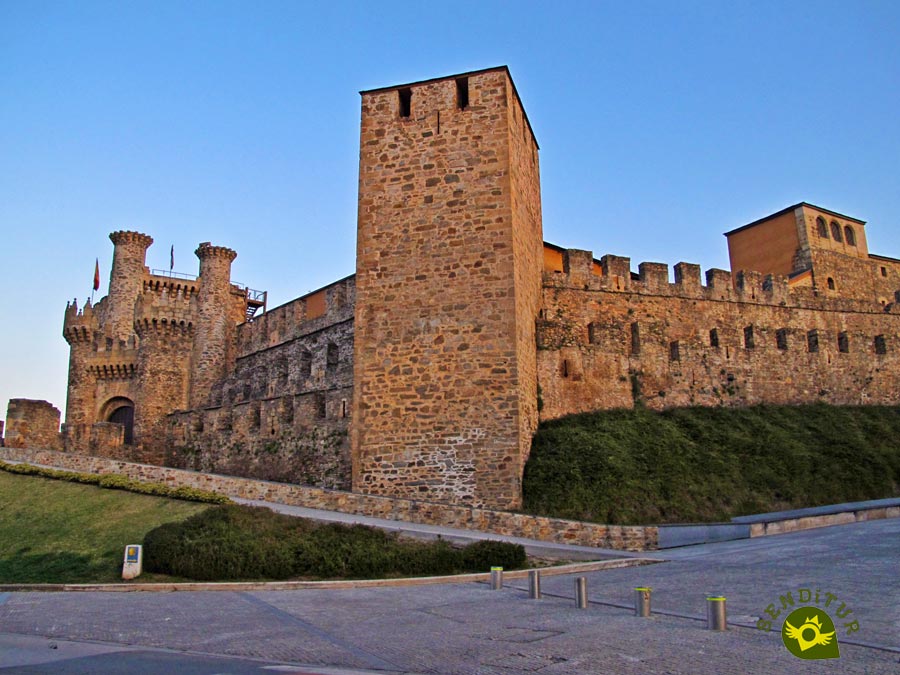
They reinforce the rampart with another wall attached to the first one and inside they build different structures, as it is known from the different excavations. The majority of the castle was built during the 12th and 13th centuries, but in itself the whole is made up of a sum of buildings and extensions ranging from the 12th to the 15th century, although without breaking the harmony; the keep is from the 15th century. The Templars were in Ponferrada until the beginning of the 14th century when, due to the trial and suppression of the Order at the period of the king of France, Philip IV the Beautiful, the master Rodrigo Yánez handed over the town to the brother of the king Fernando IV of Castile, the infante don Felipe. Years later, the castle was occupied by feudal lords, the Castro family and the Lemos family, who, with new constructions, gave the old Templar headquarters the appearance that it has today, the so-called Old Castle, a walled enclosure with its barriers and an immense Renaissance palace. Although the castle remained in perfect condition until the War of Independence, it was the scene of disputes and lawsuits for its possession until the Catholic Monarchs took it for themselves.
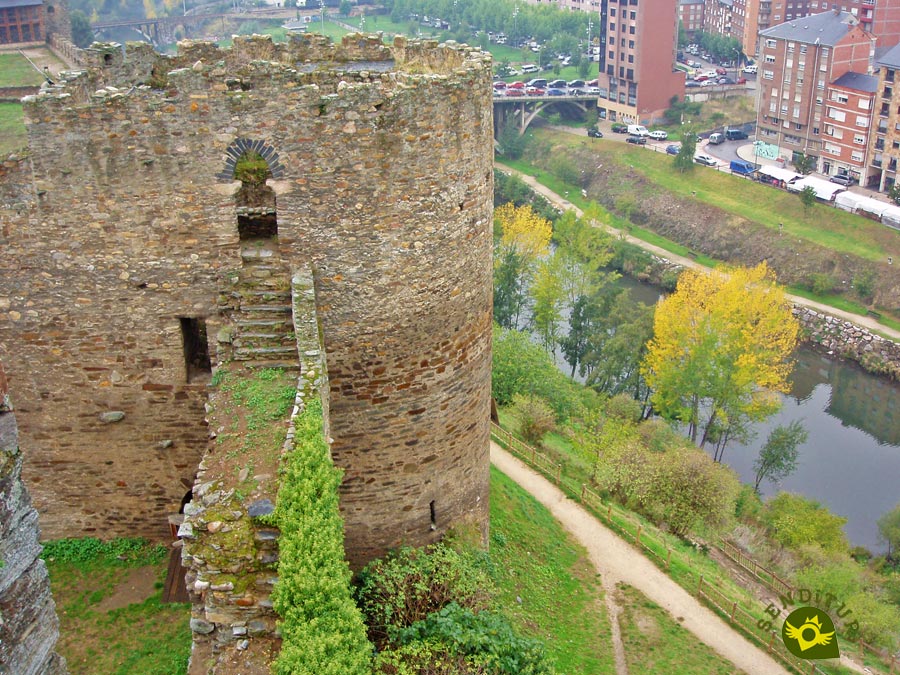
During the 17th and 18th centuries the castle was ruled by a Corregidor in the name of the Crown. The nineteenth century was the beginning of the decline of the fortress which sees how its enclosure is flown so that it was not occupied by the French. As a consequence of this, in 1850, the town council of Ponferrada begins to use its stones for the construction of a market and some stables attached to the walls. Declared a National Historical-Artistic Monument in 1924, this castle is one of the best examples of medieval Spanish civil architecture, being at that time one of the largest fortresses in northwestern Spain.
The Castle of Ponferrada has a complex structure of irregular polygon shape and big dimensions, with triple defenses and crenellated towers that give it that military and majestic bearing at the same time that its past history Templaría gives it a character of mystery and esoterism. The Castle of Ponferrada that is being visited today is therefore the result of a long series of extensions and reforms carried out over the centuries, and of excavations and restorations carried out since the beginning of the 20th century. The coats of arms and blazons of those who occupied it and contributed to its construction, and who shine their stones, are the unequivocal seals of its different stages.
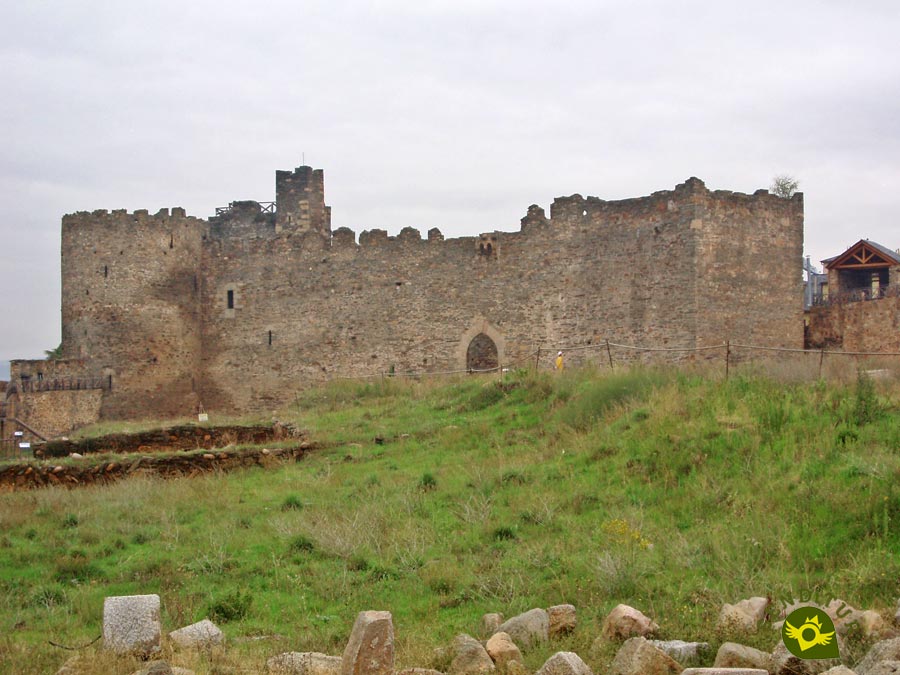
A spectacular entrance door, on the south side, crossing the moat over a bridge that was originally a drawbridge, and flanked by two large crenellated towers, leads the visitor to the parade ground where, on the left side, the homage tower is raised high and conserves a curious inscription translated from Latin that reads: "If the Lord does not protect the city, in vain he who guards it watches". Walk, see and above all let your imagination run while you visit the rooms that once belonged to the old castle, towers such as Moclín, Cabrera, Malvecino... The new palace with the remains of the hall and gallery of tiles, rounds, stables, cellar, is an easy and pleasant task within the walls of this magical enclosure that also houses the Templar Library and Centre for Research and Historical Studies of Ponferrada, with the permanent exhibition 'Templum Libri' and a large collection of incunabula and facsimile books among which is that of the trial carried out against the Order of the Temple.
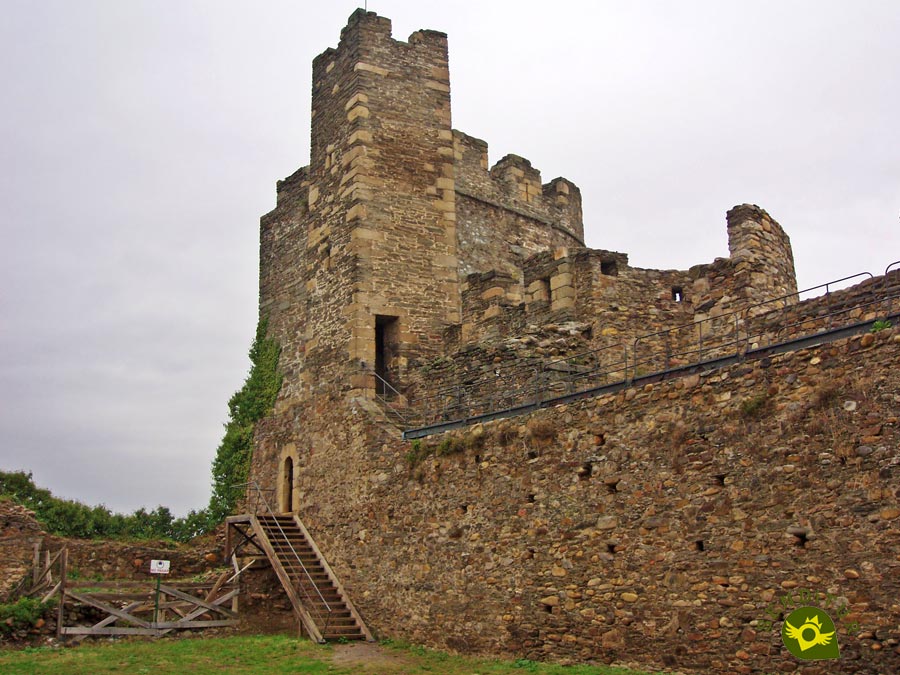
The Castle of Ponferrada is also known as the castle of the twelve constellations, its twelve original towers reproduced the forms of the constellations. Twelve towers, twelve constellations, twelve months, twelve apostles...the letter Tau, Templar Cross, at the entrance door of the courtyard. Symbols that the Holy Grail and the Ark of the Alliance were kept here?
The Santo Cristo de la Fortaleza, Christ of the Templars, as it is traditionally known, used to be in the hermitage of San Andrés, which limits with the castle; before it presided over the chapel of the castle, that of Santa María. Now this Christ is in the basilica of La Encina.
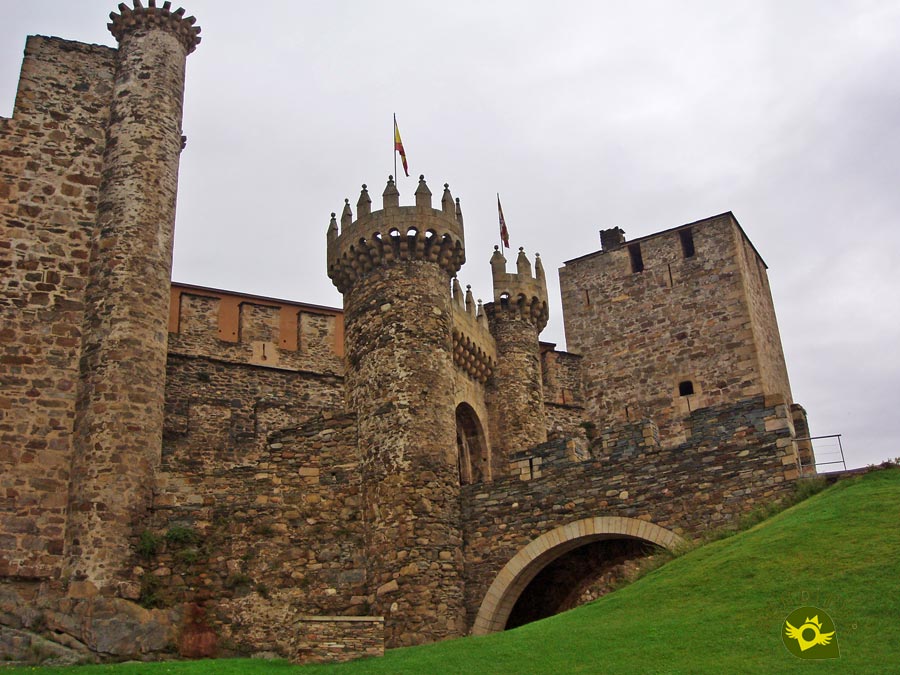
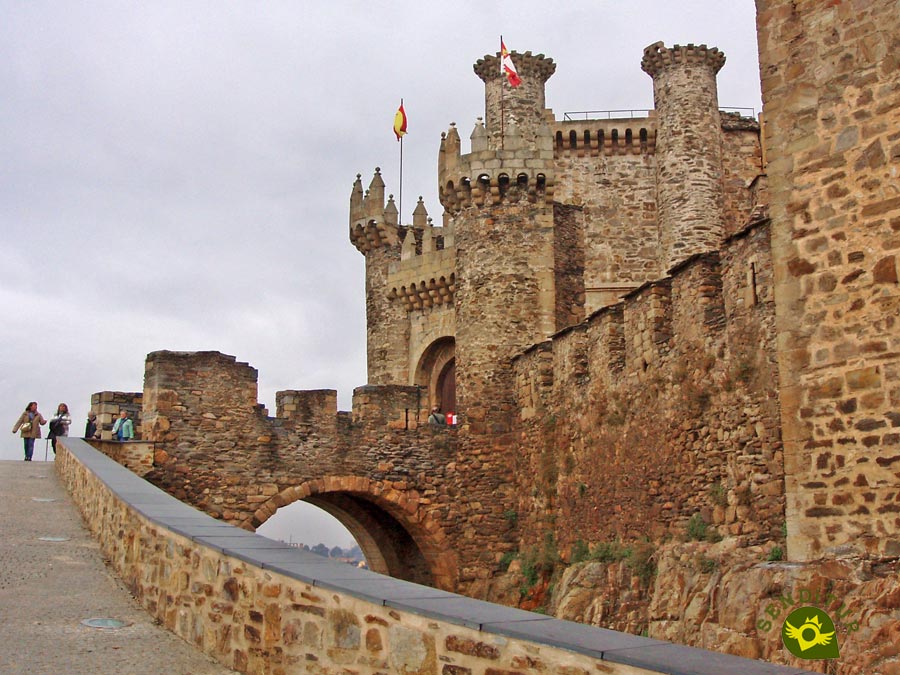
Legend has it that while cutting wood for the construction of the castle, a Templar knight discovered in the hollow of an oak tree the image of a Virgin that it is said had been brought from Jerusalem by the bishop Toribio of Astorga in the year 450 and that a few centuries later, when the Muslim invasion and to protect it, another bishop of Astorga, San Genadio, had hidden it. Near the castle, in the Basilica of the Virgin of La Encina, now the patron saint of Bierzo, a replica of the original carving, which disappeared, dates from the sixteenth century.
MORE ROUTES AVAILABLE, DON'T MISS IT...
MORE PLACES AVAILABLE, DON'T MISS IT...
Ponferrada can be reached via the A-6 or the N-VI national road, which links Madrid and La Coruña. We can also do it by the national N-120 which route links Logroño and Vigo with Orense, in turn the N-536 joins Ponferrada with Las Médulas and the Region of Valdeorras. The regional and provincial roads such as the CL-631 connects it with Villablino, the LE-142 which connects it with Astorga through the Foncebadón port, the LE-711 connects it with Cabañas Raras, Sancedo, Vega de Espinareda and Fabero, or the LE-713 connects Ponferrada with Cacabelos and Villafranca del Bierzo. From Ponferrada bus station, which is located on Avenida de la Libertad 15, there are regional services to Toral de los Vados, Carracedelo, Bembibre, Villafranca del Bierzo..., as well as those that connect it with other important cities and capitals such as León, Salamanca, Madrid, Santiago de Compostela, La Coruña... The station's telephone number is 987 401 065. Ponferrada also has a train station located on Avenida del Ferrocarril 9, which connects it with Vigo, La Coruña, Zaragoza, Madrid and Barcelona. The telephone number for further information is 987 410 067.
To get to the Castle of Ponferrada we must enter the city. The Templar Castle can be found in the Avda. del Castillo, one of those that surround the historic quarter of Ponferrada. More specifically, the fortress is located on the banks of the river Sil, in the southern part of the town. Along this avenue we will have parking areas where we can park our vehicle.
SENDITUR is not responsible for any variation in the information described, as well as for the misuse of its guides and recommends that everyone be responsible and prudent in carrying out the activity. Likewise, we invite you to document yourself with books and specialized guides to complement the information described. From the commitment of SENDITUR with Nature and the respect to the balance of the environment, SENDITUR urges you to travel in a responsible way, with low environmental impact and respecting at all times the Natural, Cultural and Social environment wherever you go. For any suggestion, SENDITUR invites you to send an email to
8:05 h.28 km.
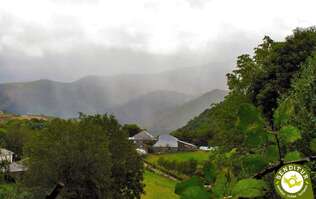
Continue watching …